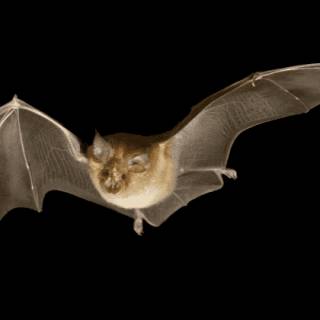Bats that are present in China as well as other South Asian countries carry other coronaviruses that have the capacity to cross over to humans, Chinese virologist Dr Zheng-Li Shi from the Wuhan Institute of Virology has warned. Dr Shi said that some of the viruses were similar to SARS-CoV-2, the virus responsible for the Covid-19 pandemic.
“We should not only search for them in China, but also in South Asian countries. We think these viruses have a high risk of interspecies transmission to humans,” said Shi, who is nicknamed “bat woman” because her research group studies bat coronaviruses. She made the statements at a webinar during a joint session of the National Academy of Medicine and the Veterinary Academy of France.
Dr Shi called for greater surveillance between wild animals and farmed/domesticated animals, as well as between farmed animals and humans. Her remarks come even as a World Health Organization (WHO) team is currently investigating the origin of the pandemic.
Coronaviruses are a large family of viruses and the coronaviruses that can infect people are 229E (alpha coronavirus), NL63 (alpha coronavirus), OC43 (beta coronavirus), and HKU1 (beta coronavirus), says the CDC. The other human coronaviruses include MERS-CoV (the beta coronavirus that causes Middle East Respiratory Syndrome or MERS), SARS-CoV (the beta coronavirus that causes SARS), and SARS-CoV-2 (the novel coronavirus).
Some scientists have earlier said that it is likely that SARS-CoV-2 was passed from bats to a mystery animal species that then passed it on to humans. Dr Shi also believes that the virus jumped from an intermediary host animal to humans. It is not clear how long SARS-CoV-2 might have been circulating in an animal or humans before it was detected in December 2019 in Wuhan, China. Dr Shi noted it could have been in humans or animals “for a very long time.” She said that if the intermediate host was a pangolin, as some have proposed, then it is possible the virus jumped from bats to pangolins outside China since pangolins that reach China are generally smuggled in from other Asian countries and Africa.
In a paper that was published as a pre-print earlier this year, Dr Shi and other authors boosted the idea that the Chinese horseshoe bat is a natural host of coronaviruses like the ones that cause SARS and Covid-19. Based on their findings, the researchers recommended that continued surveillance of this group of viruses in bats is essential for preventing the next SARS-like disease.
Dr Shi and other scientists had also discovered multiple species of horseshoe bats that were living in a single cave in China's Yunnan Province. They found that “genetic recombination between viral strains in bats” may have produced the "direct evolutionary ancestor" of the strain that caused a deadly outbreak of SARS in humans. Besides, the study also revealed that various SARS-related coronaviruses, capable of using human ACE2 (the receptor of SARS-CoV in humans), are still circulating among bats in this region. Accordingly, the risk of spillover into people and the emergence of a disease similar to SARS is possible, the team concluded.
In another paper, which also had Dr Shi as a co-author, researchers had stated that Covid-19 may have originated in horseshoe bats and likely evolved in Yunnan Province, but an origin elsewhere in Southeast Asia outside China cannot be ruled out. They analyzed all known coronaviruses in Chinese bats and used genetic analysis to trace the likely origin of the novel coronavirus to horseshoe bats. “The emergence of SARS-CoV-2 further underscores the importance of bat-origin coronaviruses to global health, and understanding their origin and cross-species transmission is a high priority for pandemic preparedness. Because intensive sampling has not, to our knowledge, been undertaken in countries bordering southern China, these surveys should be extended to include Myanmar, Lao PDR, and Vietnam, and perhaps across southeast Asia,” the authors wrote.
